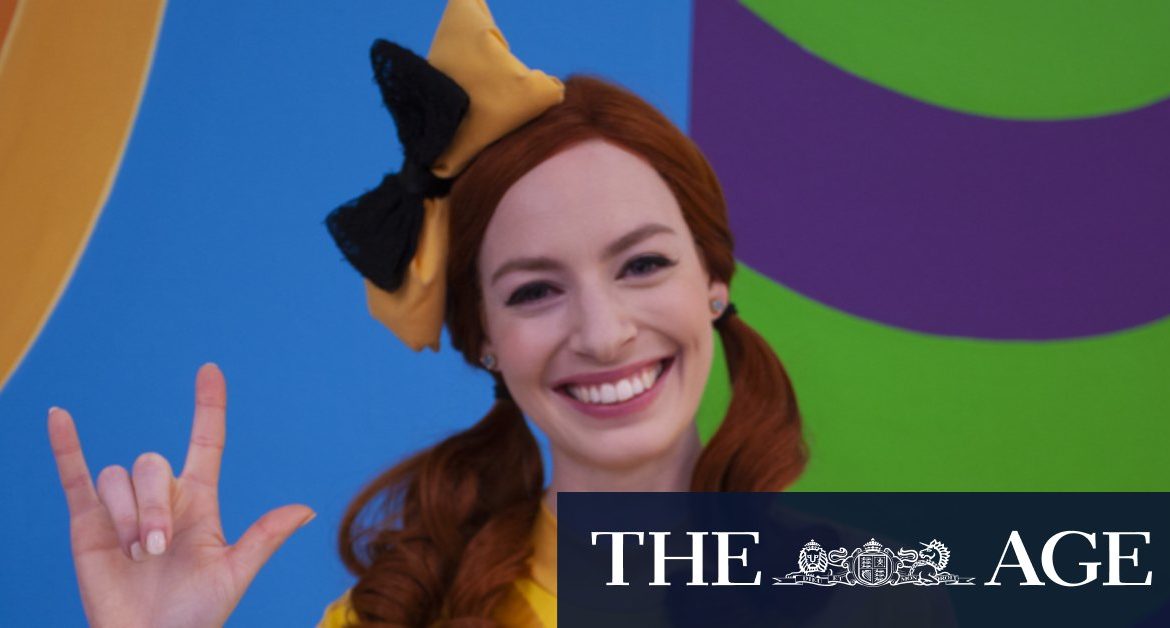“In a live show we get instant feedback, and it’s the same for the children, so there’s a mutual benefit there,” Watkins says.
“Whereas through technology we’re still trying to figure out how we can best enable that child to be engaged in something that is not only entertaining but has an educational element — or developmentally appropriate concept — that’s joined with it so that we know it’s beneficial to them.”
As we’re talking my three-year-old, sitting next to me in silent awe at his favourite Wiggle and not convinced she isn’t a recording, begins mirroring Watkins’ gesticulations. He then decides to grab his foot and wave it around for the camera and Watkins, while discussing the benefits of interactivity, also grabs her foot and waves it around, causing my son to collapse laughing onto the couch.
Loading
The reason for our chat is that The Wiggles and Google have collaborated, along with a culinary team, on a new experience for Nest Hub smart displays where kids can choose ingredients for a pavlova. The kids yell out their choices, which are integrated immediately into song verses that The Wiggles are playing on screen (to the tune of Hot Potato), and at the end the Google Assistant serves you a custom recipe so you can bring the fruity creation to life.
The custom pavlovas are generally fresh and simple (and there’s no way to make a bad one), though you may need to go through the song multiple times; once to get your ingredients list and again when you’re ready to go. Thankfully you can tap the options rather than yell out if the kids have left you in the kitchen to finish their creation. There’s also a linear pavlova song, and recipes for a deluxe pav themed after each Wiggle.
Why pavlova? Google says it’s the most-searched dish at Christmas time in Australia, with spikes tending to be particularly high on December 21. Watkins says it also ties into The Wiggles’ favourite theme of fruit salad, and its versatility makes it a great fit for the kind of virtual interaction they’re aiming for.
The Wiggles Kitchen provides a pavlova experience in time for Christmas, but the plan is for a full suite of recipes and activities.
“Especially with our audience, because they’re mostly pre-literal and in that really early development stage, The Wiggles tend to try and give the children a choice. So, even though you’re making a boundary in terms of how many choices you’re giving them, it does give them free play and a free moment to make that choice themselves, so they feel empowered to be part of the experience,” she says.
“Marrying words and actions and song to certain kinds of concepts really is beneficial to the way that they perceive information.”
Going forward Watkins says the plan is for a full Wiggles Kitchen experience that mirrors what kids see on their TV shows, but allows for direct interaction and play. Providing an intimate connection where the kids are being addressed directly and can talk back is a key part of Wiggles live shows, and something the group strives to replicate on screen.
Loading
“If they’re watching us on TV we won’t really answer back in a specific, reactionary way. We’ll be more general so that any of their answers that they might yell at the TV are all acceptable. [The Google experience] is actually more like our live show in a bizarre way … it does feel more like how we would naturally be.”
Pavlova aside, technology could also help bring an interactive Wiggles experience to kids who live where the band doesn’t tour.
“You kind of feel like Santa Claus, all the time, trying to play to as many places as humanly possible. But technology should be able to provide us with a hologram or some kind of transportation of us, or a big screen where there’s some sort of element that can be interacted with,” she says.
“We can see that now starting to happen [in augmented reality phone apps], and that’s not that strange for children because they do think that we live in a screen. But if they are going to look at us virtually, it’d be amazing to try and improve that kind of interaction, those technologies, in a way that actually engages the children to be really physically active as well.”
Technology newsletter
The top technology stories, gadget releases and gaming reviews delivered every Friday. Sign up here.
Tim is the editor of The Age and Sydney Morning Herald technology sections.
Most Viewed in Technology
Loading







